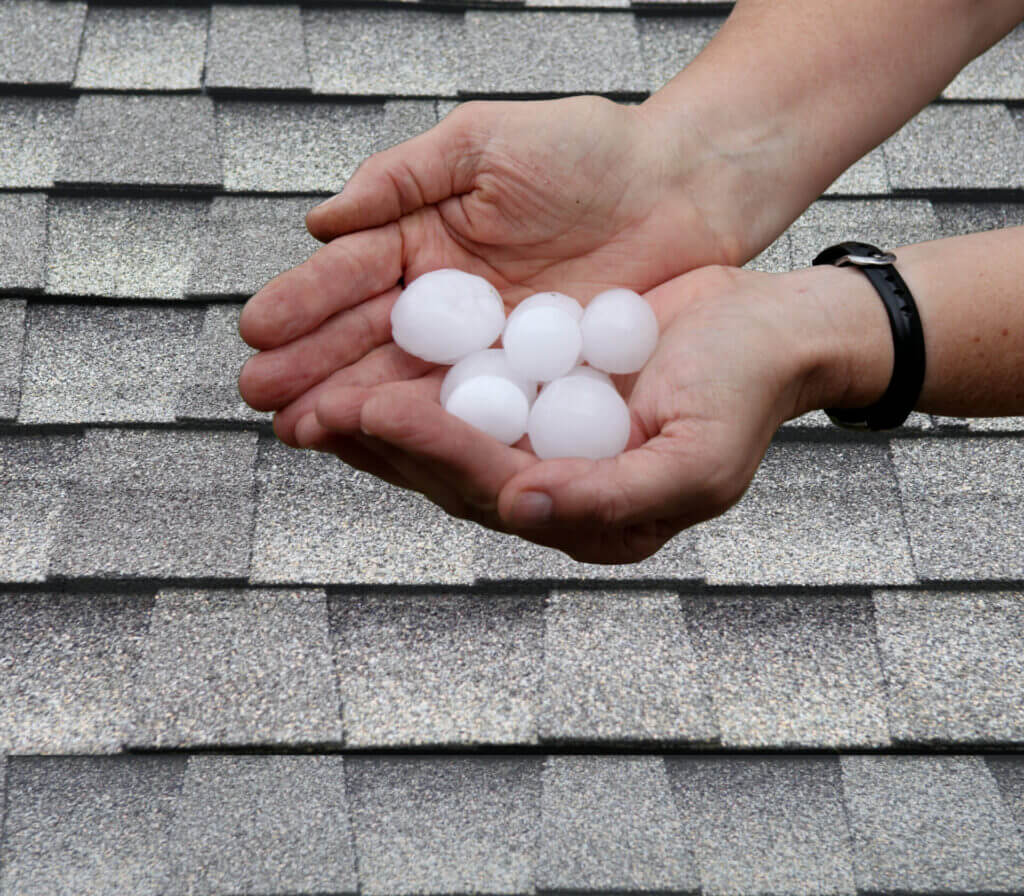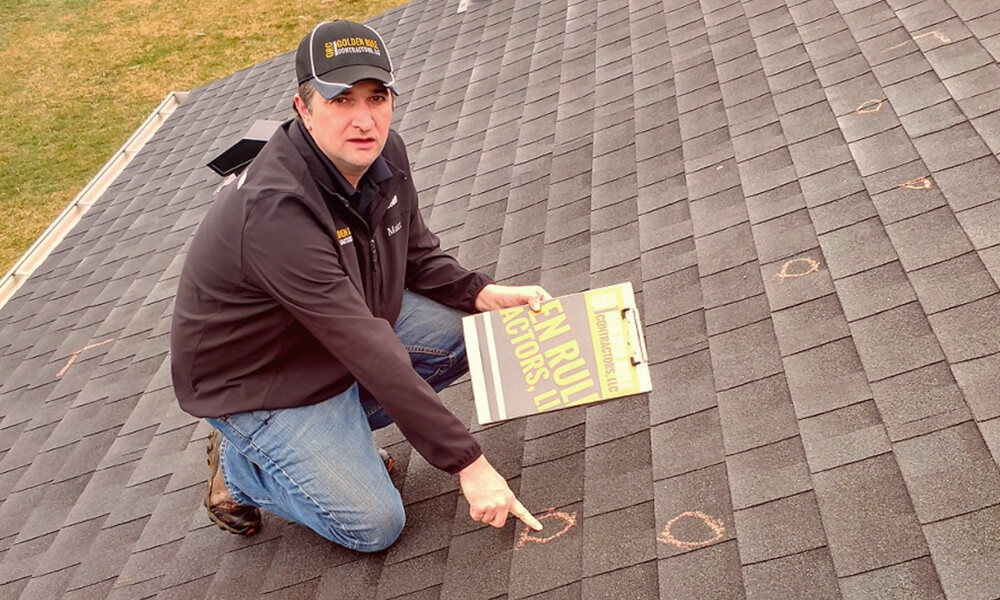Secure your roof from the long-term harm of hail damage by learning how to
identify it on shingles and take the necessary steps to repair it.
Category: Hail Damage, Roofing

Introduction:
Hail storms can wreak havoc on your roof and shingles, leading to leaks, decreased insulation, and even complete roof failure. While you may be able to spot the damage from the ground, it’s crucial to inspect your roof thoroughly to determine the full extent of the damage. This comprehensive guide will help you recognize hail damage on shingles and take the necessary steps to repair it.
Understanding the Various Forms of Hail Damage on Shingles
Hail Indentations: Hailstones can leave behind small indentations on the shingle’s surface that are easily noticeable. These appear as dimpled or dented areas and come in different sizes depending on the size of the hailstone.
Bruising: Bruising can be challenging to detect, particularly if the shingles are dark in color. It happens when a hailstone penetrates the shingle’s surface and damages the asphalt layer below. This type of damage often leads to discoloration of the shingle’s surface, which can be mistaken for a shadow.
Cracking: Cracking is a common form of hail damage and can result from either direct or indirect impact. Direct impact occurs when a hailstone directly cracks the shingle, while indirect impact occurs when the hailstone hits the roof and causes the shingles to crack from the impact’s force.
How to Conduct a Thorough Inspection for Hail Damage

When examining your roof for hail damage, it’s crucial to take your time and carefully examine the shingles. Here’s what you need to do:
Prioritize Safety: Before you start your inspection, make sure you have the appropriate safety equipment such as a ladder, sturdy shoes, and a harness if needed.
Get a bird’s eye view: Use binoculars to get a view of your roof from the ground. This will help you spot any large areas of damage that may not be visible from the ground.
Climb up: After identifying any large areas of damage, it’s time to climb up and inspect your roof closely. Begin at the highest point of the roof and work your way down, examining each shingle as you go.
Check for Bruising: To check for bruising, run your hand gently over the shingle’s surface. If you feel any soft or spongy areas, it’s likely that the shingle has been damaged.
Check for Cracking: Look for any cracks or breaks in the shingles, focusing particularly on the corners and edges where shingles are more susceptible to cracking.
Check for Hail Indentations: Look for any small, circular indentations on the shingles. These are the most noticeable signs of hail damage and can easily be confused with other types of damage such as holes or punctures.
Common Questions About Hail Damage on Shingles
Is hail damage covered by insurance?

It depends on the insurance policy. Most homeowners’ insurance policies cover hail damage, but it’s vital to review your policy and understand what it covers.
Hail storms can cause significant damage to your roof, but with a little bit of knowledge and effort, you can easily identify hail damage on shingles. By following the steps outlined in this guide, you can assess the extent of the damage and take the necessary steps to repair it.
It’s important to note that while hail damage can be repaired, it’s essential to act quickly to prevent further damage to your roof. In some cases, the damage may be minor and can be repaired with simple patches or seals, while in other cases, the damage may be more extensive, and you may need to replace the damaged shingles.
If you’re unsure whether your shingles need to be replaced, it’s best to consult with a professional roofer. They have the knowledge and experience to accurately assess the damage and determine the best course of action to repair your roof.
In conclusion, by understanding how to identify hail damage on shingles, you can protect your roof from the long-term effects of hail damage and ensure that your roof remains in top condition for years to come.
Kevin Stone – Founder & CEO
Kevin Stone, the CEO of Your Insurance Claims Network (YICN) and YICN Roofing, is a master of construction with over three decades of experience! A true professional with a specialty in roofing, storm damage restoration, and insurance claims, Kevin has garnered a reputation as a construction industry expert. With years of sharpening his skills and knowledge, he is a go-to authority in the field, possessing an intricate comprehension of construction, particularly roofing and storm damage restoration.